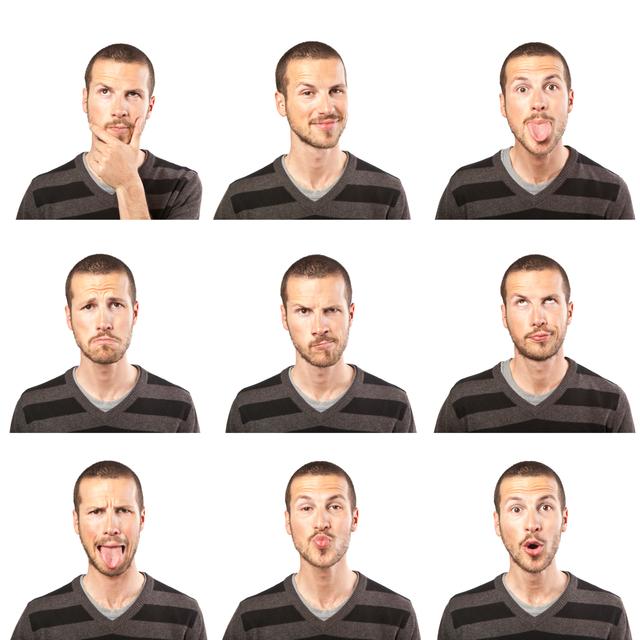| Complexity level: | 5 |
| Time required: | Additional time is needed to recruit assistants, participants, and develop pictures (if needed). |
| Safety concerns: |
Overview
Historically, psychologists have considered facial expressions a gauge to how a person feels inside? a reflection of his or her emotional state. This theory has been challenged with new research that shows that there is little or no correlation between facial expressions and the emotional state of a person. Most researchers do agree that facial expressions serve as a form of communication. When someone smiles or frowns, it sends a clear message to others. A point of contention is whether the facial expressions reveal to the observer the emotional state of the person, or do facial expressions of the person merely serve to elicit a desired response from the observer.
Scientific Terms
Materials
- Four assistants who are willing to have their picture taken. Age is not a factor but two of the assistants should be female and two should be male.
- Camera, cell phone or tablet equipped with a camera
- Ten participants: five males and five females, age ranges should be the same.
- Poster board (optional).
Procedure
Pre-experiment
- Take pictures (head shots) of your four assistants; each assistant should be photographed separately.
-
Your assistants should display the following emotions:
- Happiness
- Joy
- Boredom
- Anger
- Frustration
- Surprise
- Excited
- Sadness
- Disappointment
- Curiosity
- Confusion
- Fear
- Only one assistant needs to convey each of these emotions, so divided evenly, each assistant will convey three of the emotions.
- When taking the assistants pictures, prepare them by asking them to recall a time when they felt the specific emotion. When they are ready, tell them to convey the emotion and take their picture.
- Repeat this process for each of the emotions assigned to them.
- If you are taking traditional photographs (The ones that require developing film or on polaroid) write the name of the emotion on the back of the photograph. If you are using a cell phone, make a list of the emotions conveyed by each assistant, placing them in the order that they appear on your cell phone.
Conducting the experiment
- Present all the photographs to each participant. If you are using photograph prints, you can make a display on a poster board. If you are using your cell phone or tablet, you can have the participant view them directly.
- Have the participant identify the emotion that each of the photographs conveys.
- Record the participant?s response on the data sheet.
- Repeat this process with the remaining emotions.
- Repeat this process with all participants.
- Check the accuracy of each participant?s responses.
- When each participant?s response has been checked for accuracy, total up the number of correction responses for each emotion and place them in the bottom row of the data table.
- What emotions did participants identify correctly most often?
- What emotions did participants mistakenly identify most often?
|
Happiness |
Joy |
Boredom |
Anger |
Frustration |
Surprise |
Excited |
Sadness |
Disappointment |
Curiosity |
|
|
Mark "yes" or "no" if expression correctly identified |
||||||||||
|
Participant 1 |
||||||||||
|
Participant 2 |
||||||||||
|
Participant 3 |
||||||||||
|
Participant 4 |
||||||||||
|
Participant 5 |
||||||||||
|
Participant 6 |
||||||||||
|
Participant 7 |
||||||||||
|
Participant 8 |
||||||||||
|
Participant 9 |
||||||||||
|
Participant 10 |
||||||||||
|
Total Correct |
References
"What is in the face" from the American Psychological Association at http://www.apa.org/monitor/jan00/sc1.aspx

